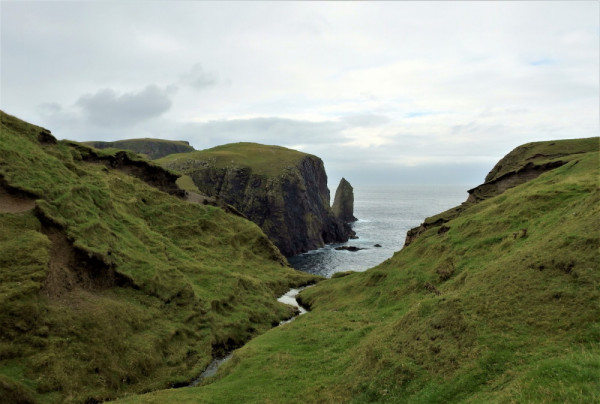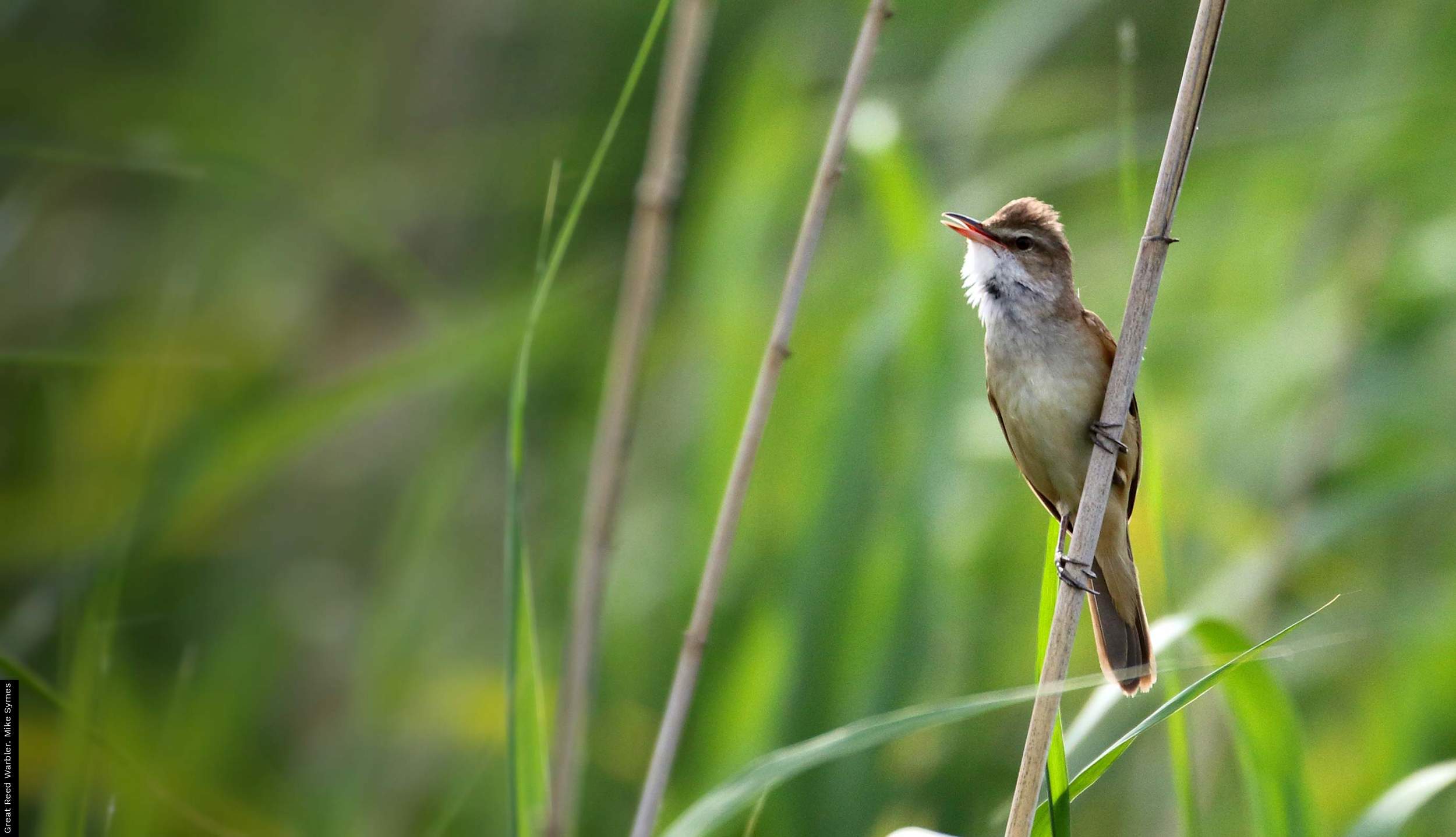Working together for seabirds
Helping to ensure a secure future for seabird monitoring

Britain and Ireland host globally important breeding populations of seabirds; in total over eight million birds of 25 species at the time of the last national census, Seabird 2000 (1998-2002). However, seabirds are facing growing pressures, from climate change to increasing exploitation of the marine environment, and are among the world’s most threatened groups of birds. To understand the threats they are facing, and to effectively target conservation action, it is vital that we have robust information on the abundance and demography of our seabird populations across the whole of the UK.
BTO is working to support effective monitoring of seabirds through its role as a partner in the Seabird Monitoring Programme (SMP) and other monitoring schemes.
Integrated monitoring: how well are we doing?
There is a long tradition of volunteer support for ornithological surveys and monitoring in the UK, and BTO aims to provide well-structured programmes that enable local effort to contribute to national studies. By drawing together demographic monitoring data on annual survival rates, breeding productivity and dispersal, we can better identify which stages in bird species’ life cycles are most important in influencing population changes, and assess the environmental factors affecting them.
The SMP collects data on the breeding abundance and productivity of seabirds from sample sites across Britain and Ireland each year and reports the results online. Additional data for some seabird species, especially those that also breed inland, are also provided through the BTO/Joint Nature Conservation Committee (JNCC)/Royal Society for the Protection of Birds (RSPB) Breeding Bird Survey and Nest Record Scheme, and reported through the annual BirdTrends report. The Retrapping for Adult Survival (RAS) scheme, part of the British and Irish Ringing Scheme, provides vital information on species’ annual survival rates - a key factor in understanding the population changes in long-lived species such as seabirds.

Seabirds are widely distributed around our coast, with a number of species, such as Black-headed Gulls, Common Terns and Cormorants, also breeding inland. Herring and Lesser Black-backed Gulls are also becoming regular visitors in our town and cities all year round. A review of data from annual SMP monitoring (Cook & Robinson 2011) revealed how annual patterns of seabird populations varied across Britain and Ireland. Through this work, species-specific recommendations were provided to improve monitoring across regions and our understanding of the importance of different regional environmental conditions. This helps diagnose the reasons why particular populations may be in trouble.
As many seabirds nest colonially, there is great potential for volunteer-based studies to contribute to the demographic monitoring of these species through ringing studies. We have also reviewed how these contribute to our understanding of seabird population change (Horswill et al. 2018). The study highlighted both the levels of effort required to accurately estimate true survival rates and detect temporal variation, and the importance of maintaining long-term support to monitor these long-lived species. It also confirmed the important role that volunteers can play in providing information on key processes affecting seabird populations.
In combination, the work we have already done provides us with a firm basis to promote effort where it is most needed and has the greatest value, enabling us to effectively advise on the factors having the biggest impact on our troubled seabirds. This information is already helping shape the national Seabird Conservation Strategies that are currently being developed across the UK.

Support for volunteers
As for other taxonomic groups, volunteers play a major role in the monitoring of seabird populations, not just in the UK, but internationally, enabling the collection of data over larger spatial scales and longer time spans than would be possible using solely professional effort.
The studies above highlight both the importance of partnership monitoring schemes, but also the necessity of long-term stability in support for volunteers, ranging from training to ongoing support around guidance on methods, online data entry and feedback. Many seabirds nest in remote parts of the country, requiring long-term commitment from those involved in monitoring these colonies (see Seabird ringing on the Shiant Islands below), and who may need direct financial support. There are, however, many opportunities for engagement in seabird monitoring closer to home, both at the coast, but also in more inland areas. BTO’s new campaign – Our Lost Seabirds – aims to enthuse, train and support the next generation of seabird biologists to collect the data that will go on to inform better scientific and policy decisions, ensuring our seabirds remain looked after for years to come.

Seabird ringing on the Shiant Islands
Seabird ringing was started on the Shiants in 1970 by David Steventon and a group of BTO-trained ringers. Survey visits continued yearly until the mid-80s. The work of the Shiants Auk Ringing Group was then revived in 2008 by Jim Lennon, an experienced seabird ringer.
Since then, Jim has worked to keep Shiants work relevant and connected. He has worked with BTO, RSPB, JNCC, the Norwegian Polar Institute, the UK Centre for Ecology and Hydrology and the Seabird Group on data, surveys and tracking, and encouraging academic use of data – for example, an MSc student is currently analysing puffin adult survival data. Part of the Seabird Group's aims are to encourage a wide diversity of younger people to get involved with seabird ringing. It keeps 1-2 places free each year for new joiners.

On behalf of the Northern Ireland Environment Agency (NIEA), BTO is already able to offer support through the Northern Ireland Seabird Network - a collective of dedicated volunteers, researchers and governmental and non-governmental organisations. In Northern Ireland we work to engage the public with seabird monitoring and facilitate the collection and integration of data with the wider SMP. Together, BTO and the Northern Ireland Seabird Network deliver the latest information on the health of Northern Ireland’s seabird colonies and showcases active seabird research in Northern Ireland and further afield. Our unique role in Northern Ireland provides an exemplar for better support and coordination of annual monitoring of seabirds in Britain and Ireland.
The value of our data
Data gathered by BTO and SMP volunteers are used in a wide variety of ways: by scientists to understand the factors causing seabird populations to change; by government agencies to identify sites in need of protection; by conservation managers protecting individual colonies; and by industry to plan future developments so they have least impact on biodiversity.
Data on colony size from the SMP provide the basis for the ‘breeding seabird index’ that forms part of the reporting on Wild Bird Populations in the UK produced annually by the Department for Environment, Food and Rural Affairs (Defra) and which is a key piece of evidence on the state of our environment used by policymakers and others. Similarly, the data contributes to reporting on the Europe-wide Marine Strategy Framework Directive, which guides European policymakers in their efforts to achieve a healthy marine environment.
Our goal is to provide opportunities for a new generation to contribute to seabird monitoring and research.
Generating renewable energy from the marine environment from wind, wave or tidal power forms a key component of the UK government’s strategy to reduce CO2 emissions and mitigate the effects of climate change. Our monitoring data contributes to the consenting process by providing critical baseline information against which potential impacts can be assessed. It is also vital in post-consent monitoring to validate predictions made during the impact assessment process. A recent review, on behalf of the Government’s Department for Business, Energy and Industrial Strategy (BEIS) (Cook et al. 2019) provided recommendations on the requirements for developing existing population and demographic monitoring of seabirds to support the needs of the renewables industry and the short-, medium- and long-term priorities for such monitoring. Through such work, we are able to ensure that monitoring programmes develop and continue to remain relevant to wider society.
Working together for seabirds
Our goal is to provide opportunities for a new generation to contribute to seabird monitoring and research. Working with the scientific research community, we aim to better understand the responses of seabird populations to environmental change. Together we aim to provide the highest quality evidence on the status of seabird populations that informs national and international policy-making and contributes to tackling the world’s ongoing biodiversity crisis.

Avian Influenza Appeal
Help us monitor the impacts of a deadly outbreak on our seabird colonies.










Share this page